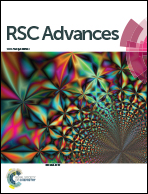Self-powered photosensing characteristics of amorphous carbon/silicon heterostructures
Abstract
Amorphous carbon (a-C) thin films are deposited on p-type silicon (Si) substrates using magnetron sputtering technique and the photodetector devices based on the a-C/Si heterostructures are fabricated. The photosensing characteristics of the devices are investigated. Under light irradiation, the fabricated a-C/Si device exhibits obvious photovoltaic characteristics. This enables its application as a self-powered photodetector operated at zero bias voltage. The obtained results show that the device is highly sensitive to broadband wavelength from the ultraviolet to near-infrared light, showing a high detectivity of ∼2.9 × 1013 cm Hz1/2 W−1, as well as a high responsitivity of ∼292.5 mA W−1, and a fast response speed of ∼8.3 μs. The mechanisms to the self-powered photosensing characteristics are clarified by the determination of the energy-band alignment near the interface of the a-C/Si heterostructures.


 Please wait while we load your content...
Please wait while we load your content...